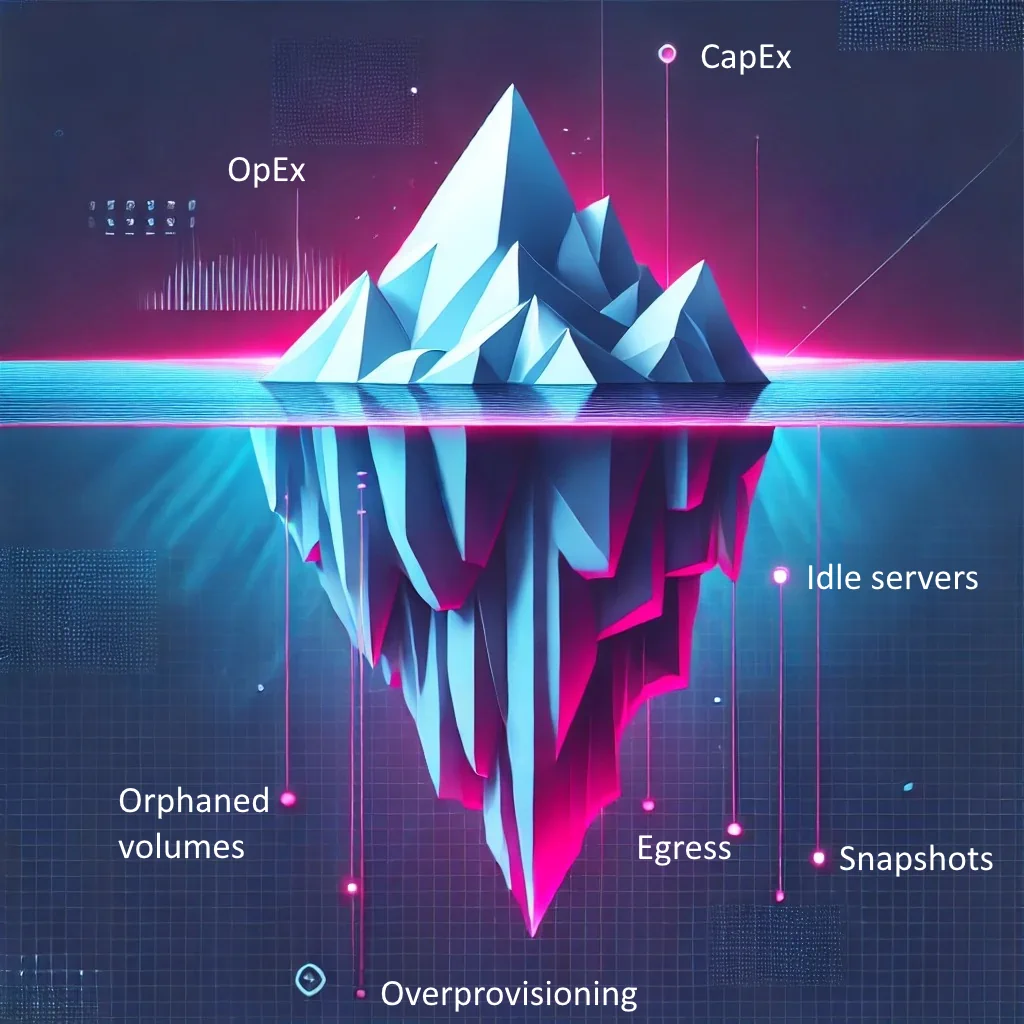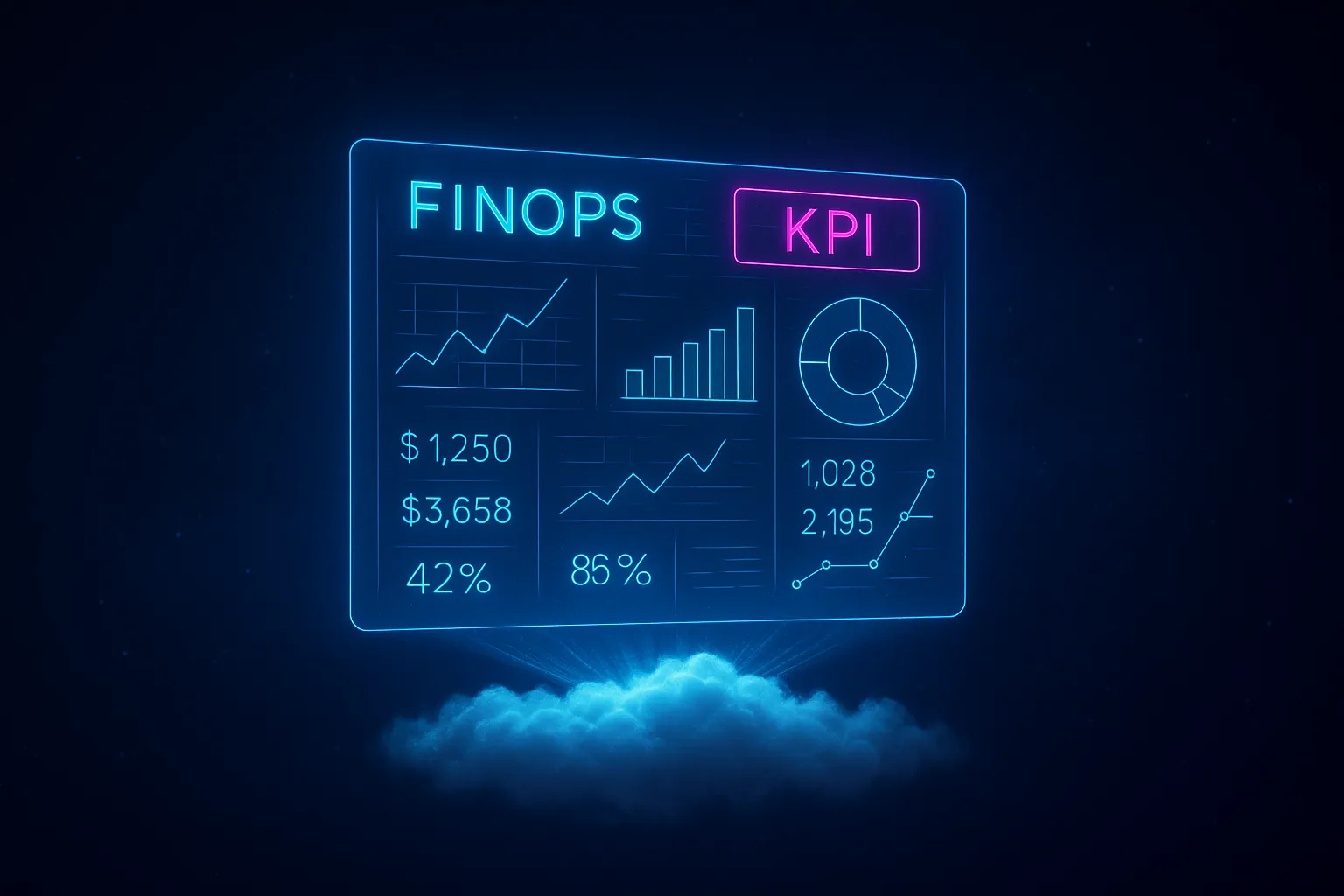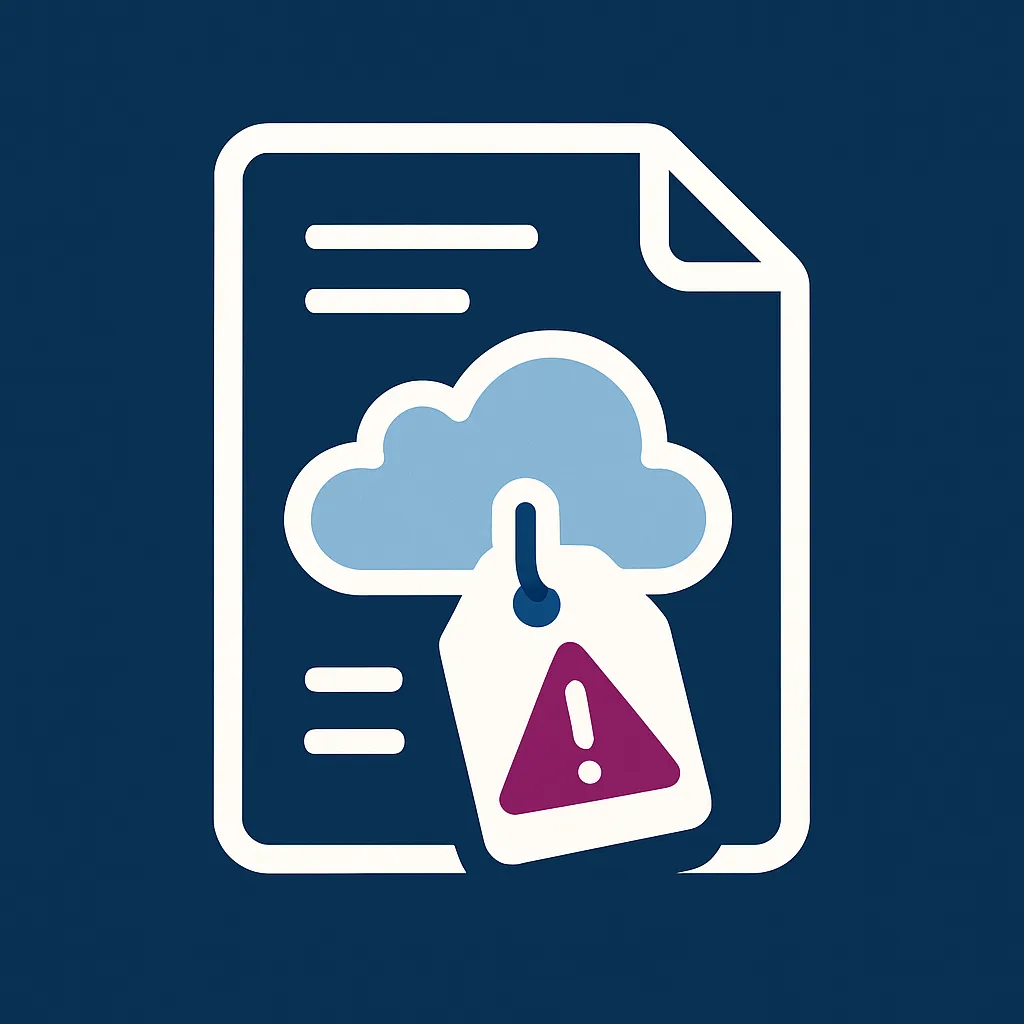The Hidden Costs of Cloud - Why traditional budgeting fails in the cloud era
When your CFO approved that cloud migration three years ago, the promise was clear: lower capital expenses, greater flexibility, and reduced operational overhead. Fast forward to today: your cloud bills have ballooned quarter over quarter, despite your best attempts at forecasting and budgeting. You’re not alone - according to Flexera’s State of the Cloud Report, organizations waste an estimated 30% of their cloud spend. For enterprises spending tens of millions annually on cloud services, that’s millions in potential savings left unrealized.
Traditional IT budgeting approaches were designed for a world of predictable capital expenditures and linear scaling. In contrast, cloud environments operate on a fundamentally different economic model that makes cost management uniquely challenging:
Complexity Multipliers: The average enterprise cloud environment contains thousands of resources across multiple accounts, regions, and service types - each with its own pricing model. This complexity creates a fog of costs that obscures inefficiencies.
Dynamic Usage Patterns: Unlike fixed on-premise infrastructure, cloud resources can scale automatically in response to demand - creating consumption spikes that weren’t accounted for in static budgets.
Decentralized Provisioning: When individual teams can deploy resources without central oversight, orphaned resources and overprovisioning become commonplace. Without proper governance, well-intentioned developers prioritize speed over cost efficiency.
Opaque Pricing Models: Cloud providers offer thousands of service variations with complex pricing structures. Reserved instances, spot pricing, volume discounts, and data transfer costs create a multi-dimensional optimization challenge that spreadsheets simply can’t handle.
Hidden Indirect Costs: Beyond direct resource consumption, organizations face indirect costs like cloud management overhead, training, compliance remediation, and integration expenses that rarely appear in initial ROI calculations.
First thing to do?
Recognizing these challenges is the critical first step toward effective cloud cost management. By acknowledging the fundamental differences between traditional IT spending and cloud economics, executives can begin shifting their approach from reactive cost control to proactive cost optimization. The organizations that master this transition typically achieve 30-50% cost reductions without sacrificing performance or innovation velocity.
In the following sections, we’ll introduce frameworks that bring clarity to cloud spending and provide a structured approach to optimization that aligns technology decisions with business outcomes.
The Business Case for Optimization - ROI calculation framework and real-world results
“We reduced our AWS bill by 47% within six months while actually increasing our workload capacity.” When I first shared these results with fellow CIOs, their initial reaction was skepticism. Surely we had cut corners or reduced capabilities? In reality, we had simply applied structured optimization principles to eliminate waste and improve architecture. Our experience isn’t unique - companies like Airbnb, Spotify, and Pinterest have documented similar savings through systematic optimization programs. The question isn’t whether substantial savings are possible, but rather how to build the business case that justifies the investment required to capture them.
The Framework?
Building a compelling business case for cloud cost optimization requires more sophistication than simply promising reduced bills. Here’s a framework for calculating the complete ROI:
Baseline Establishment: Begin by creating a true utilization-adjusted baseline. This means understanding not just what you’re spending, but what value that spending delivers:
- Map cloud spending to business capabilities and outcomes
- Calculate unit economics (cost per transaction/user/workload)
- Identify spending velocity trends and cyclical patterns
- Separate essential vs. discretionary cloud resource consumption
Savings Opportunity Sizing: Quantify potential savings across multiple dimensions:
- Idle and underutilized resources (typically 15-25% of total spend)
- Commitment discount opportunities (10-40% depending on workload predictability)
- Right-sizing oversized instances (15-30% of compute spend)
- Storage optimization (20-40% of storage costs)
- Architectural improvements (highly variable but often 15-30%)
Implementation Cost Calculation: Be realistic about the investment required:
- Tool acquisition or development costs
- Personnel time for analysis and implementation
- Potential performance testing and validation
- Training and process development
- Ongoing governance and maintenance
Risk-Adjusted ROI: Account for implementation risks and timeline variability:
- Conservative vs. aggressive savings scenarios
- Phased implementation approach with validation gates
- Time-to-savings expectations for different optimization categories
- Dependencies on application teams and architecture changes
Second-Order Benefits: Quantify additional value beyond direct cost reduction:
- Improved performance due to right-sized resources
- Enhanced visibility enabling better business decisions
- Environmental sustainability improvements
- Improved security posture from reduced attack surface
- Scalability advantages from optimized architecture
The End Result?
Using this framework, we’ve consistently seen organizations build compelling business cases that deliver 4-8x ROI within the first year of implementation. In our own experience implementing a comprehensive optimization program, the initial $200,000 investment in tools and personnel time generated over $1.5 million in annualized savings within six months.
The most successful business cases focus not just on cost reduction, but on value creation - demonstrating how optimization enables more innovation investment, improves performance, and creates sustainable competitive advantage. When properly executed, cloud cost optimization isn’t a one-time cost-cutting exercise but a capability that continuously generates value.
The Optimization Maturity Model - From reactive cost-cutting to proactive governance
Two companies of similar size face the same challenge: cloud costs exceeding budget by 40%. The first company implements emergency measures - freezing new development, mandating resource shutdowns, and imposing strict approval processes. Six months later, they’ve achieved modest savings but have also significantly slowed innovation and damaged technical team morale. The second company approaches the problem differently - implementing systematic observability, establishing accountable ownership, and creating self-service optimization tools. Within the same six months, they’ve reduced costs by over 35% while simultaneously accelerating their release cycles. The difference? Their cloud cost optimization maturity.
The Model
Cloud cost optimization maturity evolves through five distinct stages, each building on the capabilities of the previous stage:
Stage 1: Reactive - At this initial stage, organizations respond to cloud costs only when budgets are exceeded. Characteristics include:
- No systematic visibility into cloud spending
- Cost management driven by finance, not engineering
- Manual, ad hoc optimization efforts
- Focus on quick wins and emergency measures
- Lack of ownership and accountability
Stage 2: Aware - Organizations begin building basic visibility and awareness:
- Regular cloud cost reporting in place
- Basic tagging and allocation to business units
- Initial policies for resource management
- Some team-level awareness and ownership
- Focus primarily on obvious waste elimination
Stage 3: Proactive - True optimization begins with proactive management:
- Comprehensive cost monitoring with alerts
- Well-defined allocation and chargeback models
- Resource lifecycle management policies
- Integration of cost into architectural decisions
- Established optimization targets and KPIs
Stage 4: Optimized - Organizations institutionalize optimization practices:
- Automated optimization workflows
- Cost as a first-class engineering metric
- Continuous improvement processes
- Unit economics driving business decisions
- Optimization embedded in development lifecycle
Stage 5: Strategic - Cost optimization becomes a strategic advantage:
- Predictive cost modeling informs business strategy
- Cost efficiency embedded in organizational culture
- Optimization expertise distributed throughout teams
- Continuous architectural evolution for efficiency
- Innovative financial management of cloud resources
Each maturity stage requires specific investments in people, processes, and technology. Most organizations we’ve worked with begin somewhere between Stages 1 and 2. The good news is that progression through these stages can be accelerated with executive sponsorship and clear implementation roadmaps.
Where To Start?
Understanding your organization’s current optimization maturity provides a clear path forward. By identifying your position in this model, you can prioritize the specific capabilities needed to advance to the next stage, rather than attempting to implement all best practices simultaneously.
Our experience shows that organizations can typically advance one maturity stage every 4-6 months with dedicated focus. Each stage progression unlocks incremental value, with the most significant returns occurring as organizations move from Stage 2 to Stage 3, where they shift from reactive cost-cutting to proactive optimization.
In the following posts, we’ll provide specific guidance for building the capabilities required at each maturity stage, starting with the foundational elements of cost visibility and organizational alignment that enable sustainable optimization.
Conclusion: Your Cloud Cost Optimization Journey
Cloud cost optimization isn’t simply a technical exercise - it’s a strategic business initiative that requires executive understanding and sponsorship. By recognizing the fundamental differences in cloud economics, building comprehensive business cases, and following a structured maturity model, organizations can transform cloud spending from a budget concern into a source of competitive advantage.
In our next post, we’ll explore how to establish your cloud cost optimization foundation through organizational structure, accountability frameworks, and visibility mechanisms that drive sustainable results. We’ll provide practical guidance for creating a Cloud Cost Center of Excellence and developing executive dashboards that connect technical metrics to business outcomes.
The most successful cloud cost optimization programs share a common element: they’re treated as ongoing capabilities rather than one-time projects. With the frameworks outlined in this series, you’ll be equipped to lead not just immediate cost reductions, but a sustainable approach to cloud financial management that enhances rather than constrains your organization’s ability to innovate and grow.






